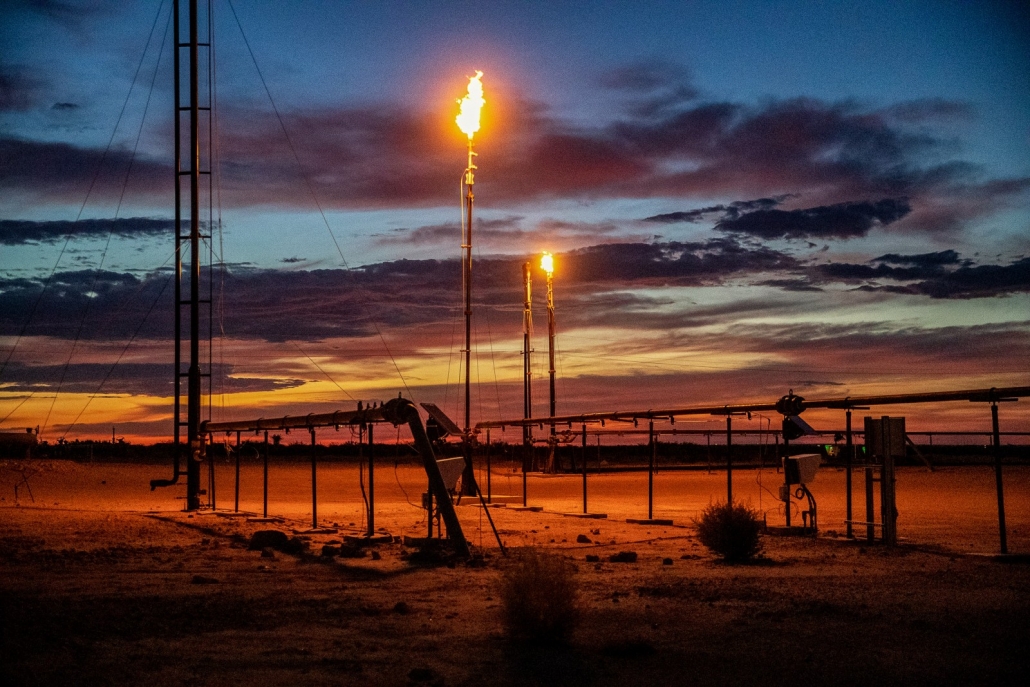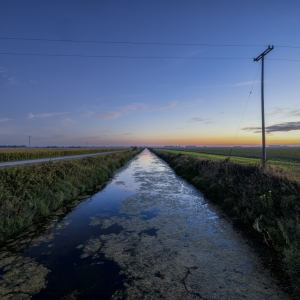The Stream, September 7, 2022: Study Reveals the Impact of Texas Oil and Gas Industry on Water Supply

The annual $1.89 trillion Texas economy, the second largest state economy and ninth largest in the world, is entirely dependent on access to adequate supplies of water. Permian Basin oil and gas developments are among the state’s biggest industrial consumers of fresh water, and largest disposers of waste water. Photo © Brian Lehmann / Circle of Blue
YOUR GLOBAL RUNDOWN
- A California wildfire forces thousands to evacuate amid a heat wave.
- China will spend billions on water infrastructure as drought worsens.
- Pakistan officials breach the country’s largest freshwater lake to prevent further flooding.
- Michigan’s largest groundwater user asks state officials to tap more as business expands.
As Texas tries to find alternative water sources amid drought, the oil and gas industry is producing nearly half of New York City’s yearly water consumption.
“We’d essentially create new salt flats in West Texas and collapse the global salt markets.”
— Rusty Smith, executive director of the Texas Produced Water Consortium
Oil and gas extraction in the Permian Basin will produce three times more wastewater than oil every day for nearly four decades, a new study finds. Lawmakers in Texas commissioned the Produced Water Consortium last year to examine how produced water could be recycled into local water supplies. The research found that the industry creates an estimated 170 billion gallons of produced water per year–an amount so high that it would be logistically difficult, expensive, and environmentally dangerous to recycle for continued use.
- In context: At the start of 2020 Texas was booming, in large part due to the advance of oil and gas wells, tank batteries, pipelines, immense wind and solar stations, high voltage transmission lines, and prodigious water supply and wastewater disposal challenges that defined the Permian Basin as the most productive energy production region in the world. Circle of Blue’s six-part series “Water, Texas” explores the consequences of the mismatch between runaway development and tightening constraints on the supply and quality of fresh water in Texas.
— Jane Johnston, Stream Editor
Recent WaterNews from Circle of Blue
What’s Up With Water—September 6, 2022 – This week’s episode of What’s Up With Water covers extreme weather’s toll in Pakistan, Mississippi’s dual water crises, and a legislative win for affordable water in California.
Drought in the American West
A wildfire in Northern California wreaked havoc on rural communities last week, the Associated Press reports. The Mill Fire–which started on or near Roseburg Forest Products, a wood veneers manufacturing plant–injured several people, burned multiple homes and forced thousands to flee. The fire broke out amid an intense heat wave across California, one that has impacted the state’s struggling power grid.
Check out Circle of Blue’s drought coverage for more of the biggest headlines out of the drying American West.
This Week’s Top Water Stories, Told In Numbers
1.7 TRILLION YUAN ($246 BILLION)
Provinces across China announced plans to spend billions of dollars on new water infrastructure as drought worsens and water supplies ebb. The country’s Ministry of Water Resources has already approved 1.7 trillion yuan ($246 billion) for 25 major water projects this year. Officials say developing alternative energy sources along the Yangtze River is a major priority, although critics say damming the river could further destroy vital ecosystems and may not solve the problem at its core.
- What’s At Risk in China: Experts say China’s drought threatens agricultural production, energy security and the economy–along with the nation’s overall stability.
100,000 PEOPLE
Nearly 100,000 people were displaced in Pakistan earlier this week after authorities breached the country’s largest freshwater lake. As chronic rainfall and flooding plague the country, officials say Manchar Lake had already reached dangerously high levels and threatened to flood densely populated areas in the southern Sindh province. The breach, they said, would stop widespread flooding and reduce water levels in already hard-hit areas.
On the Radar
Pfizer has asked Michigan state regulators to increase the amount of groundwater it withdrawals from wells at its pharmaceutical manufacturing facility near the city of Kalamazoo. Pfizer is the largest industrial groundwater user in Michigan. If approved, the company could withdraw roughly 6.5 billion gallons of water per year.
More Water News
Toxic Algae in the Bay Area: A toxic algae bloom has killed thousands of fish in the San Francisco Bay area in the past month. The cause of the bloom isn’t entirely clear, although local officials say several factors–including excess nutrients, stagnant water, and high temperatures–could be to blame.
The Fisherwomen of Lake Wullar: As pollution deteriorates one of Asia’s largest freshwater lakes, the households that rely on the lake to make a living face an uncertain future.
Jane is a Communications Associate for Circle of Blue. She writes The Stream and has covered domestic and international water issues for Circle of Blue. She is a recent graduate of Grand Valley State University, where she studied Multimedia Journalism and Women, Gender and Sexuality Studies. During her time at Grand Valley, she was the host of the Community Service Learning Center podcast Be the Change. Currently based in Grand Rapids, Michigan, Jane enjoys listening to music, reading and spending time outdoors.







Leave a Reply
Want to join the discussion?Feel free to contribute!